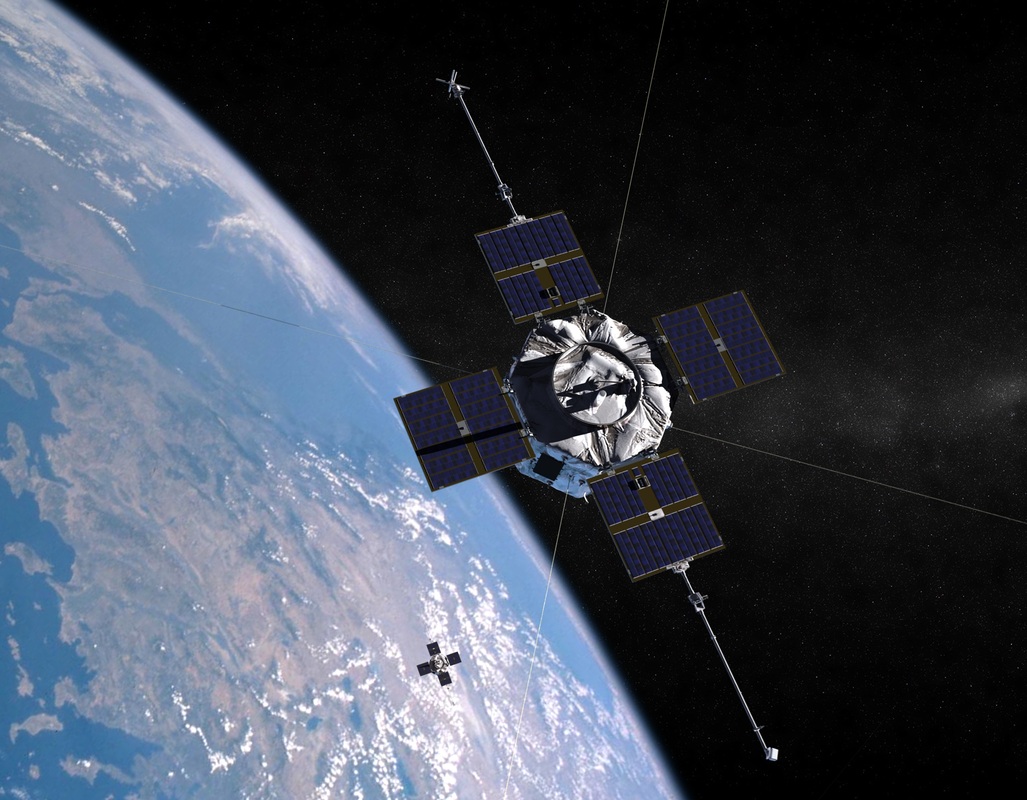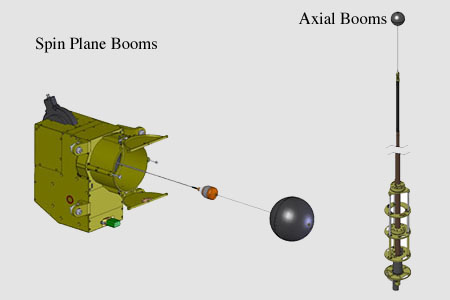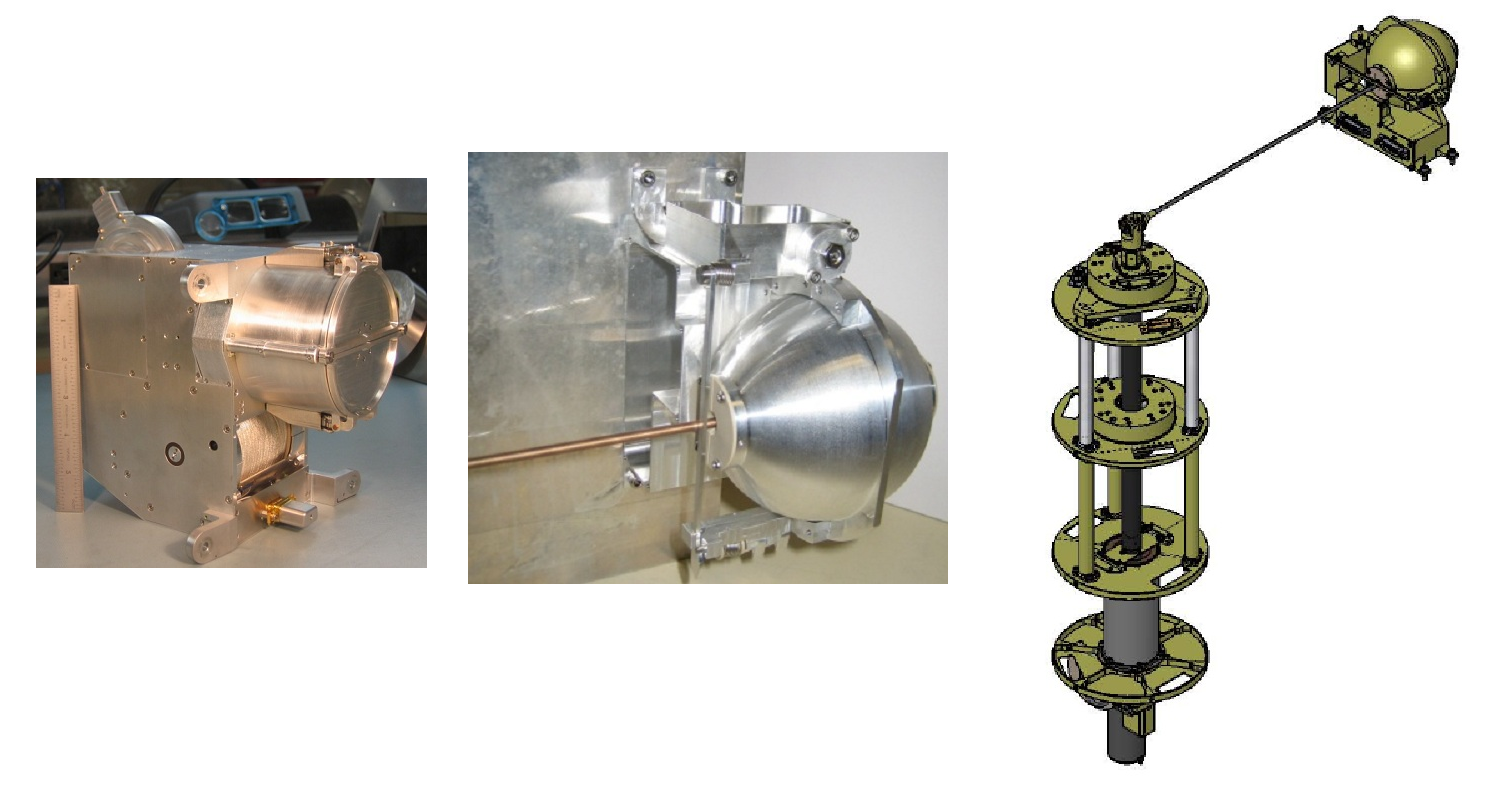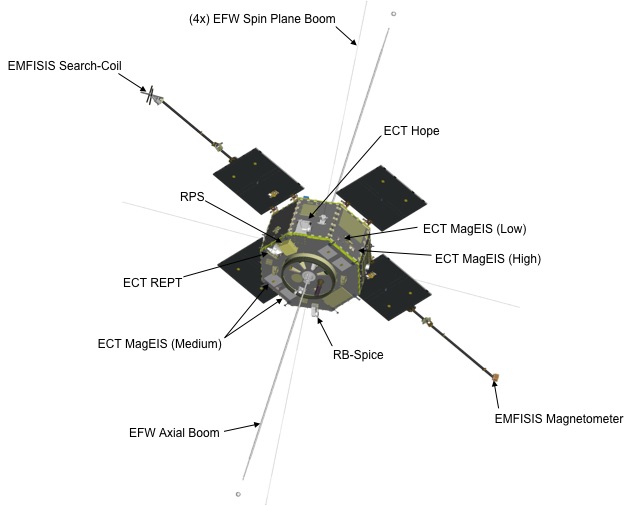Spacecraft Information

NASA’s Radiation Belt Storm Probes Mission features two identical spacecraft that are injected into similar orbits to complete a 2-year primary science mission.
Each octagonal spacecraft is 1.83 meters in diameter and 0.91 meters high. In its deployed state without booms, the spacecraft have a span of 3.2 meters. The liftoff weight of each individual spacecraft is 447.6 Kilograms for RBSP-A and 666.6 Kilograms for spacecraft B. Both spacecraft house an identical suite of instruments consisting of five payloads. RBSP-B has more mass because it carries Payload Adapter for separation of spacecraft A and the Centaur Upper Stage of the Atlas V Launcher.
The core of each Probe is the Main Electronics box that includes all major avionics of the vehicle. Since the spacecraft are passing through the harsh radiation environment of the Van Allen Belts, their electronics must be protected since radiation could damage the vehicle’s hardware after a short time in this environment. The MEB includes all Spacecraft and Instrument Controllers and associated equipment. MED is a relatively thick metal box that provides sufficient shielding for the hardware. Two sun sensors are used for attitude determination.
Each Spacecraft is equipped with four deployable, but fixed, solar arrays (total: 3.2 square meters) that generate electrical power that is consumed by the vehicle’s instruments and is stored inside batteries for night passes. Average power consumption is estimated at 269W.
RBSP’s on-board avionics computer is based on a BAE RAD-750 radiation hardened processor with 16 MB of flight-certified RAM plus a 16 GB SDRAM data recorder. The spacecraft interfaces are controlled by a customized radiation tolerant RTAX2000 FPGA (field-programmable gate array) microprocessor.
The RBSP Spacecraft are equipped with a Propulsion System that was manufactured by Aerojet. The Monopropellant Propulsion System is used to maintain the vehicle’s attitude and to conduct small orbit adjustment maneuvers. Eight 0.9-Newton Aerojet MR-103G Thrusters are mounted on each spacecraft. The vehicle’s tanks hold 56 Kilograms of propellants at launch.
Vehicle communications are accomplished via two broadband S-Band antennas that support data downlink rates of u to 2Mbps for a total data downlink volume per day of 6.61 GB.

Booms
Each RBSP Vehicle includes several booms that are required for the Magnetometer, the EMFISIS and EFW Experiments. In its fully deployed state, each RBSP Spacecraft has a span of 101.7 meters due to the large booms that are required for science operations.

The two Magnetometer Booms (Flux Gate and Search Coil Magnetometer Booms) are attached to two opposing solar panels. Each boom extends three meters from the edge of the spacecraft bus.
The Vehicle includes four Radial Booms that extend from the Spacecraft Bus. Each of these booms is a cable about as thick as a fishing wire. The booms are held in place by centrifugal forces. The booms are arranged in pairs installed on opposing sides of the vehicle. One pair is 40 meters long while the other pair is 50 meters in length. At the ends of the individual booms are metal spheres and pre-amplifiers that are part of the experiment payload.
The two Axial Booms are rigid and line up with the spacecraft’s spin axis. Each of these Booms is about 6 meters long and is deployed once the vehicle is in orbit. Axial Boom deploy occurs after Radial Boom Deployment. The Axial Booms use a motor deployment system that initially extends the booms to about 5 meters. Final deploy length is trimmed in centimeter increments using Survey Axial Electric Field and Spacecraft potential estimates to reduce common-mode signal.

Instruments
- Energetic Particle, Composition, and Thermal Plasma Suite (ECT)
- Electric and Magnetic Field Instrument Suite and Integrated Science (EMFISIS)
- Electric Field and Waves Suite (EFW)
- Radiation Belt Storm Probes Ion Composition Experiment (RBSPICE)
- Relativistic Proton Spectrometer (RPS)

